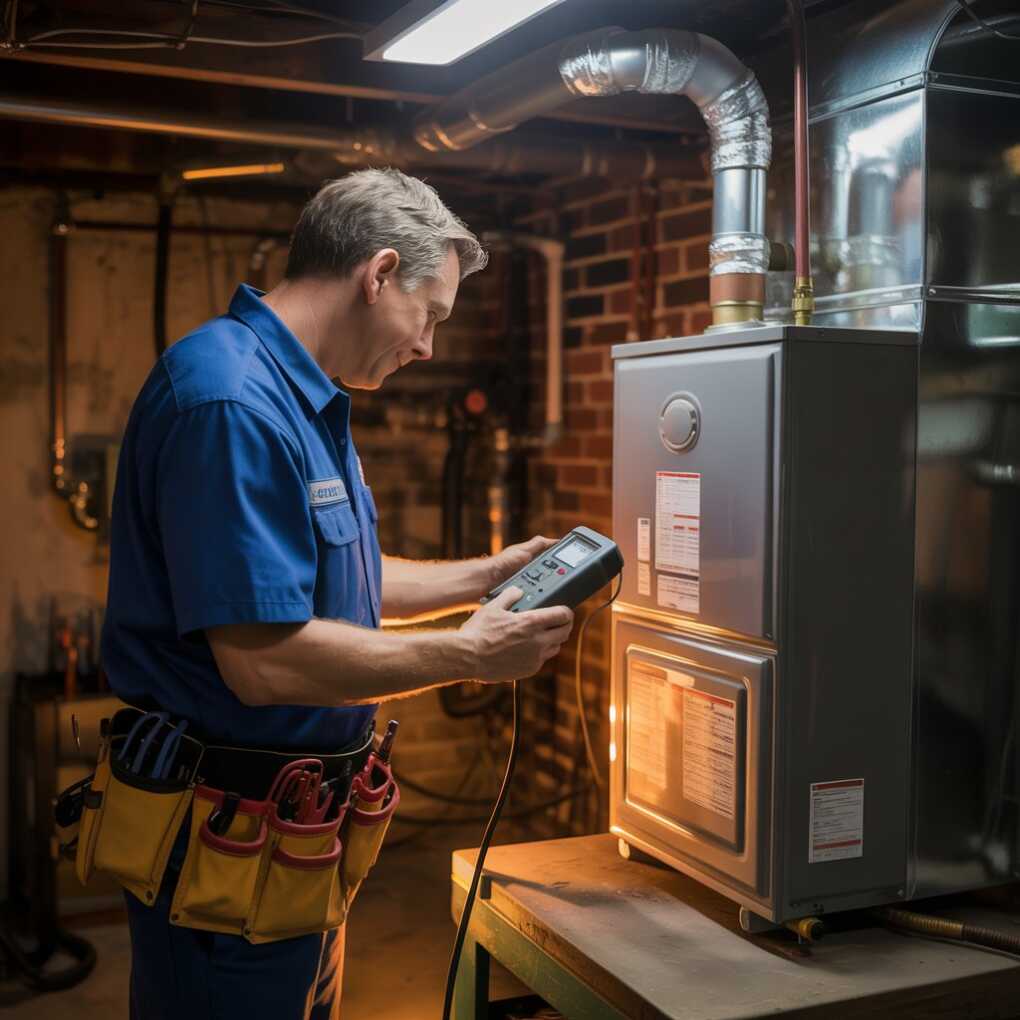When a heating system begins to act up, many homeowners are left wondering what exactly happens during a repair visit. Technicians don’t just show up, swap a few parts, and head out. A heating repair visit is a thorough inspection and diagnostic process that ensures the system runs safely, efficiently, and consistently. From safety concerns to performance issues, every step of the visit has a purpose. We will explore the core tasks and checks a technician completes during a heating repair appointment to help homeowners understand what to expect and why each step matters.

Key Areas Technicians Examine During a Heating Repair Visit
Initial System Assessment and Homeowner Conversation
The first thing a technician typically does upon arrival is speak with the homeowner. This conversation is more important than it may appear. Technicians ask questions about when the heating issue began, what symptoms the system is showing—such as strange noises, weak airflow, or inconsistent temperatures—and whether the homeowner has noticed anything unusual like higher energy bills. This dialogue helps the technician form a baseline understanding of the problem and eliminates guesswork.
From there, the Duluth home heating repair technician will often take a quick walk around the home to observe how different rooms are affected. They might feel for airflow from vents, check thermostats, and look at the unit’s location to assess potential accessibility challenges or environmental concerns like clutter or dust buildup. This step sets the foundation for a precise and efficient repair by clarifying symptoms and narrowing the scope of the issue.
Thermostat Functionality and Communication
The thermostat is the control center of a home’s heating system, and its proper operation is essential. A malfunctioning thermostat can make it seem like the furnace is failing, even if the issue lies in miscommunication or incorrect settings. During a repair visit, the technician verifies whether the thermostat is correctly calibrated and programmed. They also inspect whether it is sending signals to the heating unit properly. In cases where the system isn’t responding at all, checking the thermostat’s power source, wiring, and compatibility with the unit helps determine if it’s the root of the problem.
If needed, batteries may be replaced, or the entire thermostat may be reset. Understanding this connection can reveal simple fixes that avoid the need for deeper repairs. Technicians also use this step to ensure the thermostat’s placement in the home isn’t causing temperature misreadings due to drafts, direct sunlight, or other interference.
Furnace Components and Mechanical Checks
Once the thermostat is ruled out or confirmed to be working correctly, the technician proceeds to inspect the furnace itself. This step is highly detailed, as technicians examine components like the blower motor, igniter, burners, flame sensor, and heat exchanger. Each part plays a role in delivering warm air efficiently and safely. The technician checks whether the burners are igniting correctly, whether the flame is steady, and if the heat exchanger shows any signs of cracks or corrosion—both of which could allow dangerous carbon monoxide to escape.
The blower motor is inspected for wear or dust buildup that could slow performance, and the technician may lubricate moving parts to reduce friction. These mechanical checks are central to identifying the root cause of performance issues or shutdowns. In older systems, aging parts may be flagged for future attention even if they are still operational during the visit.
Airflow, Filters, and Ventilation Pathways
Even if the furnace itself is working properly, poor airflow can make a home feel cold and uncomfortable. During the repair visit, technicians inspect the ductwork, registers, and air filter to ensure that air is flowing freely through the system. A dirty or clogged air filter is one of the most common culprits behind heating problems and is often easy to fix. Technicians inspect whether the current filter needs replacement and whether the filter in use matches the furnace’s airflow needs. Duct leaks or obstructions are also part of this review.
A technician might find that some vents are blocked by furniture or that ducts have become disconnected in attic or basement spaces. These issues restrict airflow and reduce efficiency. If needed, technicians may recommend duct cleaning or sealing. Ensuring clear airflow from the furnace to each room is vital to achieving consistent indoor comfort during the cold months.
A heating repair visit is far more than a quick fix—it’s a detailed process designed to ensure your heating system is safe, efficient, and dependable. From the initial conversation to final testing, technicians follow a structured path that touches every critical part of the system. We explored how they check for thermostat errors, inspect furnace components, examine airflow, and verify safety connections to identify the source of a problem and ensure long-term reliability. These visits provide homeowners with peace of mind, knowing their home will remain warm and comfortable throughout the winter.
Conclusion
By understanding what technicians are looking for, homeowners can better communicate issues and appreciate the thorough nature of each visit. Regular maintenance and timely repair appointments can also prevent more serious breakdowns, reduce energy costs, and extend the life of the heating unit. Keeping these practices in mind helps ensure that heating systems continue to serve homes efficiently for years to come.
